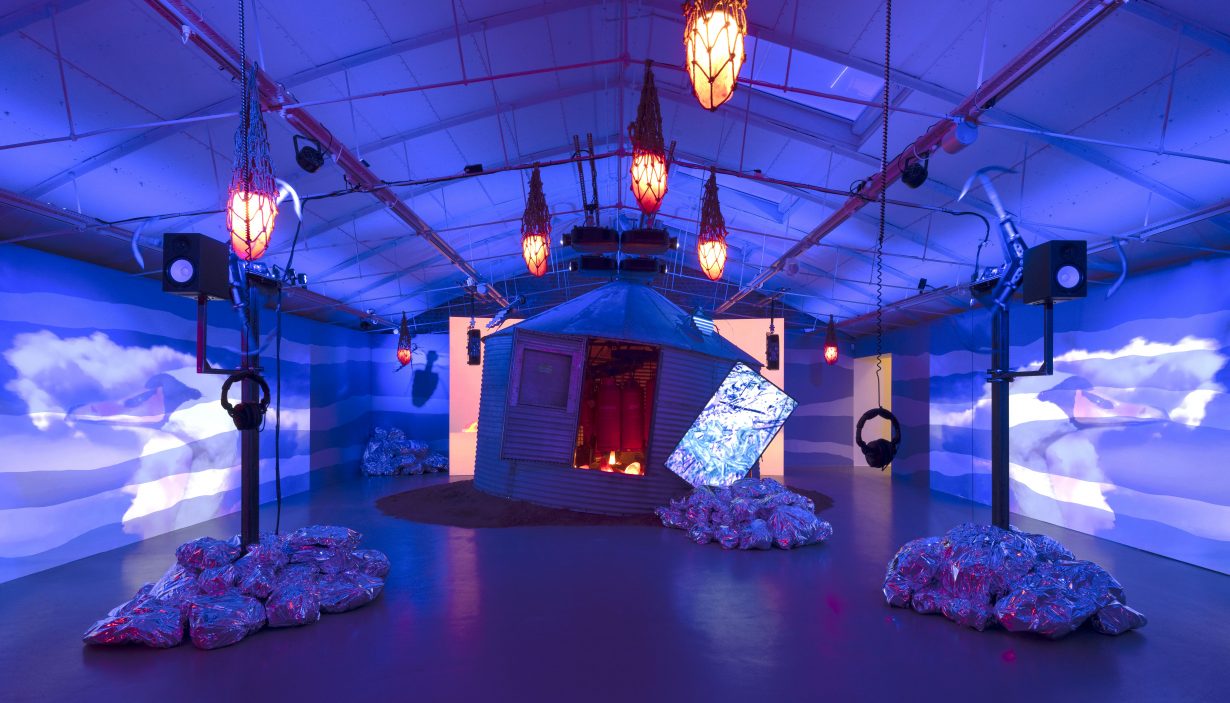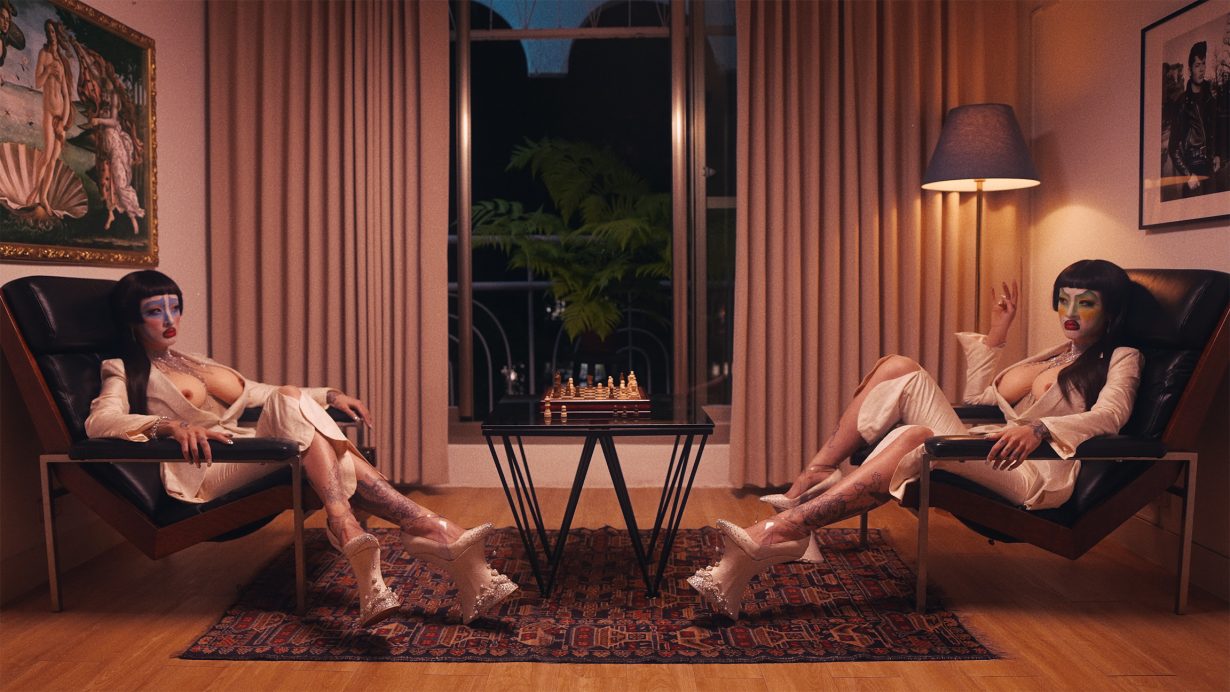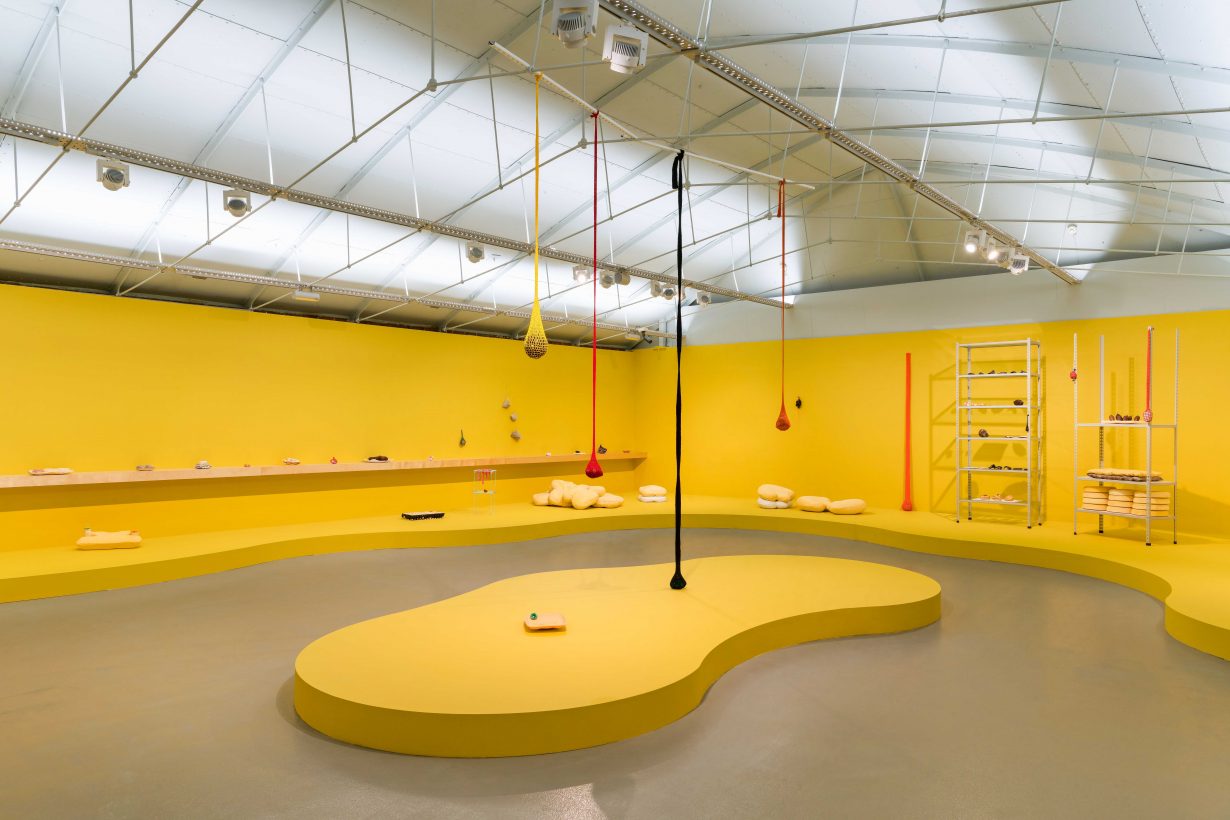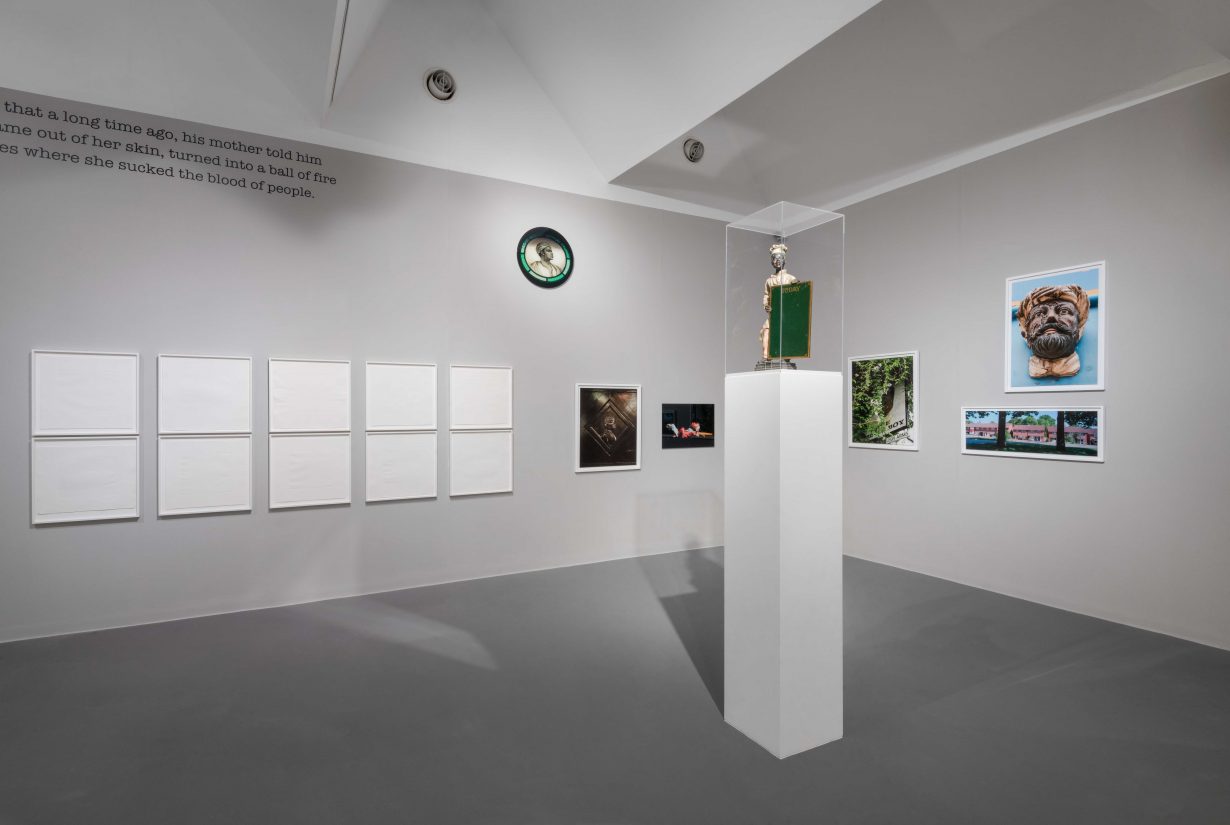Looking back to past injustice or forward to impending crisis, this year’s is a nervy, loud and unstable Prize – and troubled by a lazy habit of insider selection
After the co-winner debacle (sorry, radical egalitarian insurgency) of 2019, the COVID-enforced no-show of 2020 and the all-collectives social-practice shoulder-shrug of 2021, the Turner Prize, established to ‘promote public debate around new developments in contemporary British art’, has now pivoted back to individual artists who make stuff you can look at in a gallery. Once you’re past the institutional commitment to diversity (in this instance, three artists of colour, three female artists and one artist of indefinite gender) and that the art addresses, explores or otherwise ‘deals with’ urgent topics of contemporary cultural politics (in this instance race, gender and ecological crisis), then you get to consider whether the art is good despite all the progressive discourse, or good simply because of it. And, either way, what it might say about the state of contemporary British art.

From the get-go it’s an eye-popping, sensorially engaging experience, compact and succinctly installed in a suite of rooms on Tate Liverpool’s airier top floor (the second time the prize show has fetched up in Liverpool since the Tate started touring the show fifteen years ago). Ecosystems are in your face as you enter the glowing purple-pink passageway that introduces Heather Phillipson’s installation Rupture No. 6: biting the blowtorched peach; ranks of flatscreens on either side, displaying the staring, blinking eyes of diverse beasts – slit-pupilled frogs who lick their own eyeballs, Siberian tigers, snakes and primates. Through this weirdly accusatory procession you enter a bigger space whose walls are flooded with video projections – of evolving cloud formations; of swans in flight; of a hot orange sunrise above a black sea, in which the sun appears to morph into a fiery peach. At the centre stands a corrugated iron rotunda, its door open to a sandy interior in which hang large metal gas cylinders, clanking balefully in the induced breeze. Outside stand two ridiculous revolving turbines, whose three arms have the shape of small ships’ anchors.

Phillipson’s is a visual poem of disaster and delirium, a lurid mix of image and metaphor in which nature is thoroughly denaturised and deromanticized while hinting at our complicity in its disaster (climate crisis is a contemporary shibboleth, of course). What’s interesting is that the overload and visual toxicity offers an aesthetic version of the kind of current eco-political thinking that looks towards dissolving the centrality – the ‘anthropocentrism’ – of human beings and society, abolishing the difference between humans and nature. The ruined landscape of Phillipson’s world, its lack of stability and its merging of technology and nature suggest an ecstatic indifference to this societal and ontological collapse. It’s like being hectored by a well-meaning environmentalist friend about the imminent end of the world while you’re both on acid. And that was bad enough that first time.

Dissolving binaries, boundaries and subject-object distinctions are philosophical problems of era-defining significance, as evidenced by Sin Wai Kin’s baroque pop-cultural takes on gender. Sin, whose gender-neutral pronouns are ‘they/them’, offers up as a variety of fantastic video avatars – first, a K-pop-like boyband quartet known as It’s Only You, whose members range from the prosthetically ripped ‘Wai King’ (the ‘handsome one’), via ‘The One’ (the ‘joker’, whose face is made up with the image of a sun-headed woman, her vagina in place of The One’s mouth), through to the more cosmically made-up ‘The Storyteller’ and ‘The Universe’. The four bop out a decelerated ballad whose lyrics are both romantic cliché and modish philosophical deconstruction of the self-other binary – ‘It’s always you / you’re the one in me / you tell my different sides / my multiplicity’. While in Today’s Top Stories, Sin’s Storyteller reports on the arbitrary nature of gender: ‘You are actually a man dreaming you are a woman, or maybe that was a dream’. That tussle with gender binaries runs through Sin’s long video A Dream of Wholeness in Parts, whose protagonists – a drag queen in a glittering white trouser suit with huge fake breasts, alongside the members of It’s Only You – muse in depressive tones about the origins of selfhood in an unfortunate separation from the oneness and multiplicity of the cosmos.
Sin’s musings are precisely tuned to a bigger cultural crisis of identity and difference, for which gender is currently both refraction and avatar. Dreaming and imagining are a way of doing away with material reality, the unfortunate constraints this reality imposes on what we imagine ourselves to be, and of doing anything about it other than proposing an infinite remaking of the self.

Art, in acute moments like this, is a seismograph of these kinds of cultural anxieties and contemporary dilemmas. The Turner Prize’s two other shortlisted artists, though, have both only recently received attention for careers stretching back to the 1980s. Veronica Ryan’s quirky, absorbing sculptures – or objects? – are set out in a custard-coloured gallery, on shelves and curving low plinths that skirt the walls, while crocheted tubes hang over a central plinth, weighed down by clusters of dense, vaguely organic spheres that are hard to make out. Ryan’s sculptures are deeply invested in what makes something a sculpture, as ordinary things are made, remade and modified by small acts of craft – what looks like the dried skin of a fruit, stitched and wound back into a sphere; soft, textile covered, yellowing rings, piled in stacks on a shelf, somewhere between a cakemaker’s ring-mould and a toilet seat; a gardener’s plastic tray for seedlings, but filled to the brim with creamy goop. What’s evident in these uncertain descriptions is Ryan’s perceptive teasing out of how an object can elude a language of pre-existing shapes and ideas. They remain themselves, but whisper of place and memory and vistas of domestic life – and are always receding from you. Even the plinth is there to make looking closely a self-conscious act, as if Ryan wants the limit of discernability to be maintained.

The Montserrat-born Ryan, Ingrid Pollard’s direct contemporary, is the only artist here who cannot be contained by an artworld discourse of ‘relevance’. Yet both were variously associated with the Black art movement in Britain during the 1980s and early 90s. And Pollard, in contrast to her younger contenders, is the only artist here who deals with social reality as it has come to be, not fantasies of what it might become, her presentation sweeping through decades of British trouble over race and racism, homophobic discrimination and prejudice. The major part of her presentation is a large group of photographs, found objects, sculptures and prints that turn on her research into the culture of English pubs that have kept the image or the name of the ‘black boy’. Pollard’s exploration of provincial hinterland England, with its fogeyish and defensive attachment to its traditions, is complex and open rather than immediately accusatory. The image and myth of the ‘Moor’ – sometime African, some Arabian, almost always exotically turbaned – goes back centuries, and its continued presence in the folklore of country and market town pubs is one of those last anachronisms that might betray the presence of ingrained racist attitudes. But Pollard’s documents and images, while shocking in part through their out-of-placeness in both this liberal art space and a cosmopolitan, multi-ethnic city, suggest that it might be fading away, overgrown by ivy and shuttered like the pubs in Pollard’s photos, whose pub signage now only lives (ironically) on in a suite of ghostly embossed prints as you leave the gallery. In the other room are banner photographs and earlier agit-prop works referring to a history of Black liberation and Lesbian rights. The question that hovers here might be, ‘have things gotten any better since?’
Looking back to past injustice or forward to impending crisis, it’s a nervy, loud and unstable Turner Prize, with Ryan as a kind of island of centred, human presentness in its midst. As for representing the ‘state of contemporary British art’? Perhaps it does, but one note of scepticism: the shortlisted artists were selected for shows variously at one of Tate’s own galleries (Phillipson), or at public galleries or exhibitions whose directors are on the jury panel (Irene Aristizábal was co-curator of British Art Show 9, from which Sin was nominated; Robert Leckie is director of Spike Island, at which Ryan had her nominated show, and Pollard’s nominated show was at MK Gallery, where jury member Anthony Spira is director). This is, to say the least, institutionally lazy, and suggests that artists’ careers in Britain are increasingly inbred, self-selecting, insider affairs, which might be excluding much else that’s out there. It’s not a great look, even though this year’s Turner Prize looks pretty good, considering.
